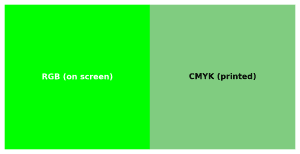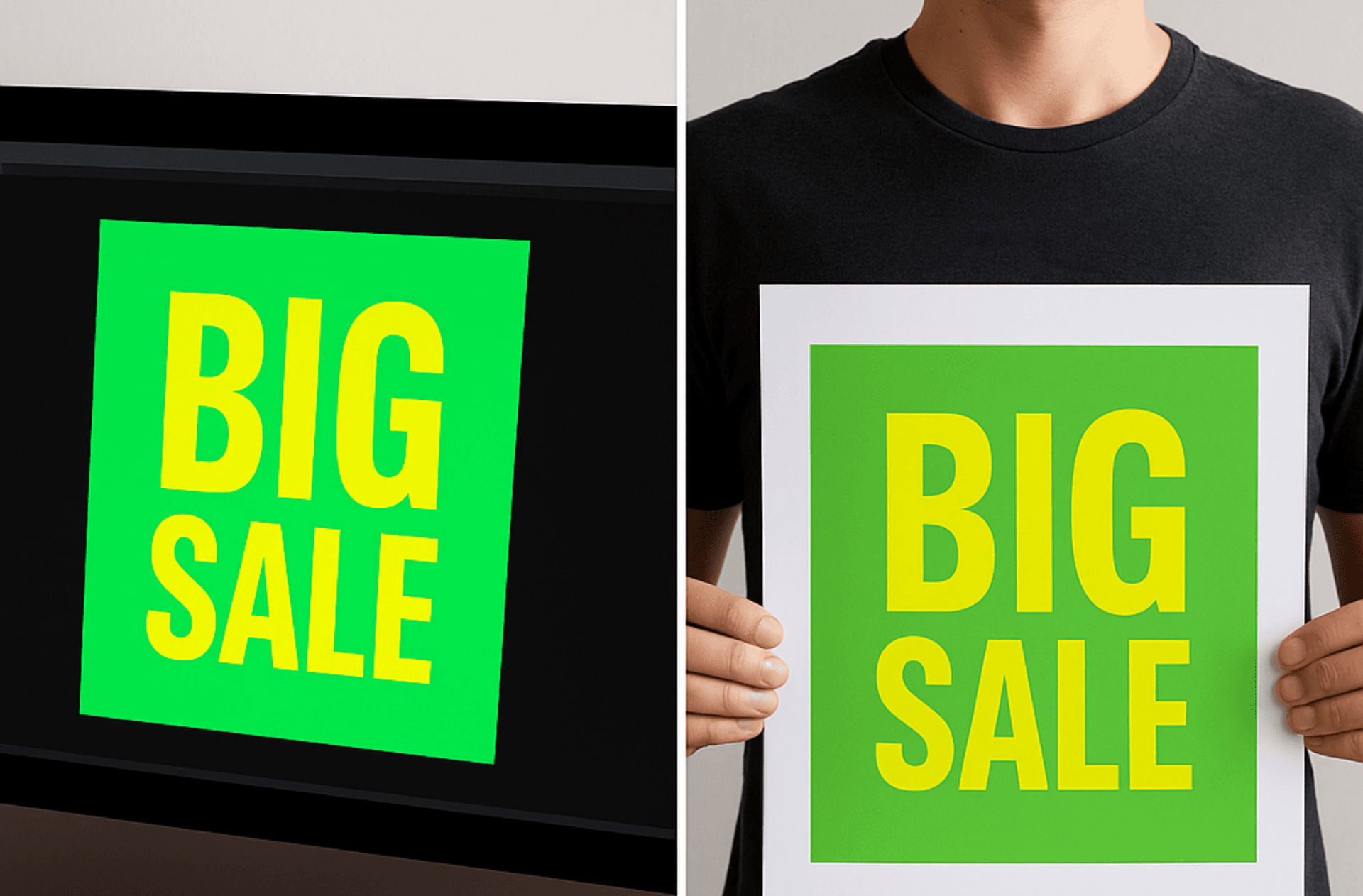One of the most common questions we get at Essex Banners is:
“Why do the colours on my printed banner look different from what I saw on my screen?”
It’s a great question—and the answer comes down to something called colour models. In this blog, we’ll explain (in simple terms) why colours can shift between screen and print, and how you can get the best results for your designs.
The Basics: RGB vs. CMYK
Let’s start with the two main colour models:
• RGB (Red, Green, Blue):
• Used for digital screens—like phones, computers, and tablets.
• It’s a light-based colour model, which means it can produce super bright, vibrant colours.
• Design programs like Photoshop, Canva, or online editors often default to RGB because they assume you’re working for digital use.
• CMYK (Cyan, Magenta, Yellow, Black):
• Used for physical printing.
• It’s an ink-based colour model, and while it produces beautiful results, its colour range is more limited than RGB.
• All commercial printers (including ours) print in CMYK.
Why Does This Matter?
When you design something in RGB and then send it to us for printing, our machines automatically convert the colours from RGB to CMYK. While most colours stay close, certain shades—especially bright or neon colours—can look different because CMYK simply can’t reproduce those ultra-bright tones.
Example:
• You design a banner with a neon green background on your screen.
• On your screen (RGB), it looks super bright and vibrant.
• When it’s printed (CMYK), that same green might come out looking duller or more muted. This is because neon and very bright colours don’t exist in the CMYK colour palette.
Think of It Like This…
Imagine RGB is a giant box of 1,000 crayons, and CMYK is a smaller box with 500 crayons. Some of the bright colours you see in the big box (RGB) just don’t exist in the smaller box (CMYK), so the printer has to pick the closest possible match.
What About HEX Codes?
A lot of customers tell us, “I’ve got the HEX code for my colour, so it should print exactly the same, right?” This is a really common misunderstanding, so let’s explain:
• What is a HEX code?
A HEX code (short for hexadecimal) is a 6-digit code used to represent colours in digital formats. For example:
• Bright red: #FF0000
• Neon green: #39FF14
• Deep blue: #0000FF
• How HEX relates to RGB:
HEX codes are just another way of writing RGB colours. So, a HEX code only tells us how the colour appears on a digital screen—it doesn’t tell us anything about how that colour will look in print.
• Why HEX doesn’t guarantee a print match:
Because HEX is screen-based (just like RGB), a colour that looks great with a HEX code on your screen still has to be converted into CMYK for printing. This means that, even if you give us a specific HEX code, we’ll still need to translate it into the closest CMYK match—which can look different, especially for bright or neon colours.
For example:
• You love the neon green #39FF14 on your screen.
• We convert that to CMYK for printing, but neon shades aren’t fully possible in CMYK—so the printed result will look more like a standard green.
In Short:
• HEX = for screens (same as RGB).
• CMYK = for print.
• HEX codes help us understand your intended colour, but the final print will always match the closest possible CMYK version.

How to Avoid Surprises
We want your prints to look amazing every time. Here are a few simple tips to help you get the best results:
• Design in CMYK mode:
Most design programs allow you to choose CMYK as your colour mode. This helps you see from the start what your colours will look like in print.
• Be cautious with neon and bright colours:
If your design relies on very bright greens, blues, oranges, or neon shades, know that these won’t appear exactly the same in print.
Quick Recap
• RGB = for screens.
• CMYK = for print.
• Bright, neon-like colours may look less vibrant when printed.
• Always design in CMYK when possible to avoid surprises!
So to wrap it up..
We know it can be frustrating when your print doesn’t match what you saw on your screen—but with a little understanding of RGB and CMYK, you can design with confidence and avoid disappointment. Need help setting up your file or want to chat about your next banner? Get in touch with the Essex Banners team—we’re always here to help!




